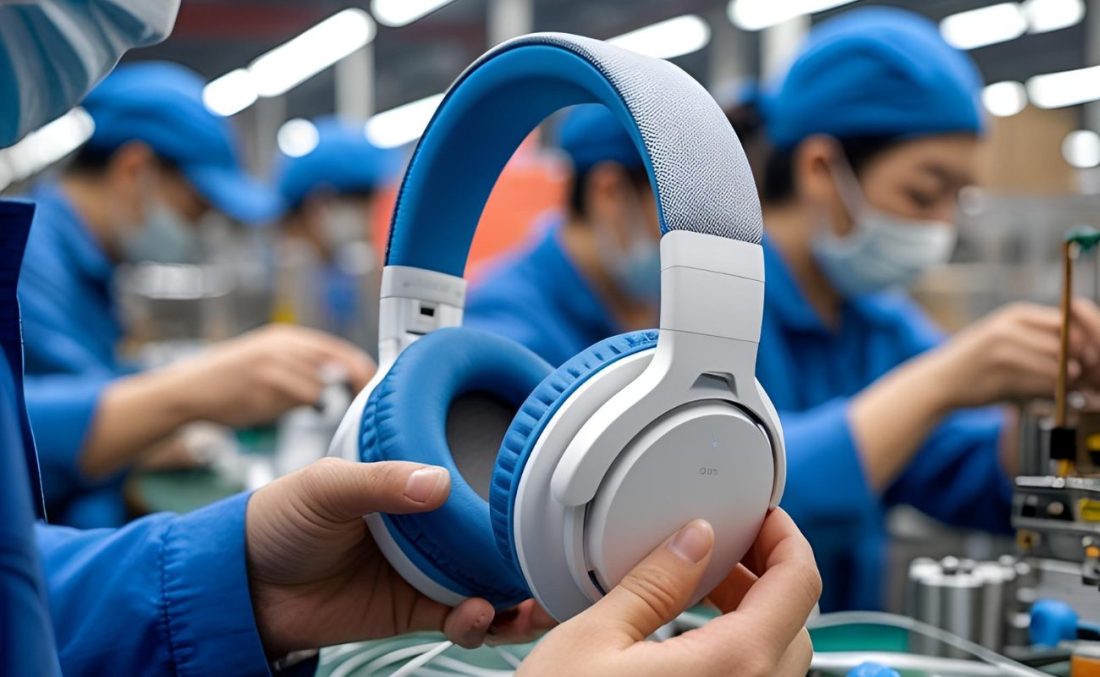Sourcing, tariffs, and China’s value
August 5, 2025

Say you invented a new product that you wanted to sell in the USA. You studied the market and you know it is going to be a winner. You have money to invest in inventory and get started. Now, you need to bring your product to market as quickly as possible, as cheaply as possible, and without sacrificing quality. Where would you make it?
Not China, say most people, because of the tariffs.
Think again.
China is still likely to be the best choice because that is where you will find the most suppliers, the highest quality, and the cheapest prices. But what about Vietnam? Would it be cheaper to source from there? And how about Mexico? Would these countries not be better sources given the tariffs?
To unwrap this concept with clarity, we need to be more specific. So, let’s say the product is a Bluetooth/wireless headphone with fun, interchangeable accessories: rabbit ears, devil horns, cat ears, reindeer antlers, etc., that you intend to retail for $50 or less. Now, let’s compare 3 countries: China, Vietnam, and Mexico.
You will need to consider the following main factors:
–First cost: The cost of the product FOB (free on board) at the local port.
–Tariffs: This will be in the category of standard consumer electronics
–Quality: This is all-important; you don’t want to cut corners. So you must find manufacturers who have a good track record of making the kind of product you are buying.
–Freight: Let’s assume it is the same for all 3 countries. Even if there are some differences, they will not be big. Mexico’s freight to the USA is cheaper, but one needs to factor in the freight costs of materials to Mexico as well. For the sake of this study, we added an arbitrary $0.50 to the product for freight.
–Delivery speed: Mexico offers an advantage of quick response time for inventory stored in the country.
A quick comparative profile of each country:
China:
-Can it be sourced? Yes, easily.
-First cost: $10
-Tariff: 40% or $4.00
-Freight: $0.50
-Landed Cost (First cost + freight + tariff) = $14.50
Vietnam:
-Can it be sourced? Yes, it may take some time because it will use Chinese components.
-First cost: $11.5 (Vietnam, on average, is at least 15% more expensive than China.)
-Tariff:
-40% or $4.6 – if considered to be China-origin goods (due to the Chinese components
-20% or $2.3 – if considered to be Vietnam-origin goods
-Freight: $0.50
-Landed Cost (First cost + freight + tariff)
-$16.60 – if considered to be China-origin goods
-$14.30 – if considered to be Vietnam-origin goods
Mexico:
-Can it be sourced? No. Mexico does not produce standard consumer electronics, unless your product is a TV or a large appliance. But it could be assembled with Chinese components. Using that approach…
-First cost: $13.00 (Mexico assembly costs are higher than China or Vietnam.)
-Tariff:
-If USMCA compliant: 0%
-If non-USMCA compliant: 25% or $3.25
-Freight: $0.50
-Landed Cost (First cost + freight + tariff)
-If USMCA compliant: $13.50
-If non-USMCA compliant: $16.75
Quick summary:
-China: The lowest cost, the best quality, the quickest delivery.
-Vietnam: Could be competitive with China, depending on which tariff is applied. But it will be slower to produce.
-Mexico: Could be competitive with China if USMCA compliant (unlikely), but even so, sourcing it will take a long time to produce this.
After the goods land, can you sell them at a profit? Using the simple 4x rule (the retail price is 4x your landed cost), you get this:
-China: Cost: $14.25. Retail price: $57
-Vietnam: Cost: $14.30. Retail price: $57.2
-Mexico: Cost: $13.50. Retail price: $54
Without tariffs, you could have easily sold your product for a retail price under $50 and made a good profit. With tariffs, you will either need to reduce your margins or raise your price. But chances are you would still be competitive.
This is where it becomes interesting: If you manage to source your product at a slightly lower price, say 10%, you would have been able to retail it for under $50 despite the tariffs. 10% may sound like a lot, but most buyers will leave money on the table, especially when sourcing new products, because their focus is mostly on quality and delivery.
Now, if your product is in the 55% tariff category, using the same numbers as above, it would retail at $62, and Vietnam and Mexico may look more attractive. On the other hand, if you could negotiate the China price down by 20% you could still retail it at $49.60.
The ability to source effectively is what makes a difference in a resilient supply chain. The secret to a profitable supply chain is that it is professionally run; this is especially true as the supply chain becomes more complex due to geopolitical factors and technological advancements. So, what specific value does such a service provide to you, the importer?
Here is a quick short list:
-Best first cost – Value to you: Improves your margins and profitability, giving you an edge over the competition.
-Structuring effective contracts or purchase orders – Value to you: Peace of mind; reduced chance of expensive future disputes.
-Monitoring quality and ensuring conformity – Value to you: Immeasurable, and the confidence that the goods will meet all your customers’ expectations, protecting your brand’s reputation.
-Ensuring timely shipping – Value to you: Knowing goods will arrive on time increases sales and reduces inventory costs.
Conclusion: In America, there are 95% more supply chain managers than two decades ago. There is a reason for this: the benefits of such a service vastly exceed the cost. If you want to source profitably, find yourself a sourcing expert who understands your vision and knows how to execute plans.
